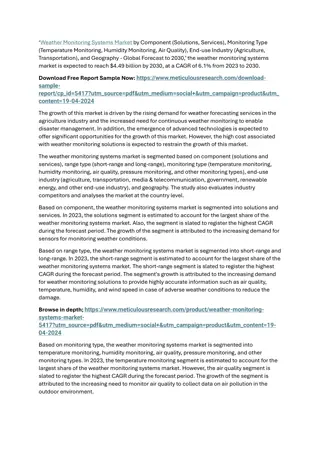Four-Year Plan for WMO Space Weather Activities 2024-2027
Space Weather is a crucial aspect of the natural space environment affecting various technologies on Earth and in space. The plan outlines goals, historical context, and key recommendations by INFCOM-3 for monitoring and modeling solar, magnetospheric, and ionospheric activities. Integration of Space Weather into WMO activities and regulations is vital for enhancing services and mitigating impacts on navigation, telecommunication, and energy sectors.
Download Presentation

Please find below an Image/Link to download the presentation.
The content on the website is provided AS IS for your information and personal use only. It may not be sold, licensed, or shared on other websites without obtaining consent from the author.If you encounter any issues during the download, it is possible that the publisher has removed the file from their server.
You are allowed to download the files provided on this website for personal or commercial use, subject to the condition that they are used lawfully. All files are the property of their respective owners.
The content on the website is provided AS IS for your information and personal use only. It may not be sold, licensed, or shared on other websites without obtaining consent from the author.
E N D
Presentation Transcript
Item/doc 8.5/(2) Four Year Plan for WMO Activities related to Space Weather 2024-2027 Third Session of the Infrastructure Commission (INFCOM-3, 15-19 April 2024) Jesse Andries/Scientific Officer SSU Space Weather 18 April 2024
Content 1. Space Weather 2. History at WMO and Recommendation by INFCOM-3 3. Main content of the Plan and points of attention 4. Core of the Recommendation
Space Weather The physical and phenomenological state of the natural space environment, including the Sun and the interplanetary and planetary environments. Multiple technologies (both in space and on Earth surface)severely impacted by SWx (navigation, telecommunication, energy sector, spacecraft operation ) Strong increase in demand for SWx services Multiple observables to be monitored across the Earth and in space (Solar, magnetosphere, ionosphere, Earth surface...) Modelling across several physical layers: Sun, heliosphere, magnetosphere, ionosphere, (Graphic by NASA)
Space Weather at WMO 2024 EC-78 Four-year Plan for WMO activities related to Space Weather 2024-2027 2015 Cg-17 draft Four-year Plan for WMO Activities related to Space Weather 2016-2019 (later adopted at EC-68) 2008 The Potential Role of WMO in Space Weather (SP-5, April 2008) (WMO/TD-No. 1482) 2023 Cg-19 Keep Resolution 53 (Cg-18) in force 2019 Cg-18 Four-year Plan for WMO activities related to Space Weather 2020-2023 2011 Cg-16 Space Weather in RRR and part of Space Programme 2024 INFCOM-3 Recommendation to EC Doc 8.5(2) ET-SWx IPT-SWeISS ICTSW WMO Reform All previous Four-year plans available at ET-SWx website
Space Weather part of WMO Strategic Plan 2024-2027 The physical and phenomenological state of the natural space environment, including the Sun and the interplanetary and planetary environments. Space Weather is included in multiple WMO activities: Part of WMO Rolling Review of Observing Requirements since 2011 and an integral part of WIGOS and the WIGOS Vision 2040 Vlab Strategy Unified Data Policy Cataloguing of Hazardous events (ET-CHE) But actual integration of Space Weather in WMO regulations and systems still largely remains to be implemented
Overall content of the Four-year Plan Update of the previous Four year plans: Set general aims and objectives: Data availability to Members Promote and facilitate development and enhancement of capabilities Make use of synergies with operational meteorology Gradual shift from general aims to concrete implementation activities for integration into WMO regulation and systems Coordination and collaboration with other International Organizations
Activities across WIGOS/WIS/WIPPS and beyond 8.1(1) Amendments to WIGOS Manual (WMO-No. 1160) Initial inclusion of Observing System for Space Weather; attributes to be included in future updates. Links to Services e.g. Aviation
Recommendation for EC to Adopt the Four-year Plan for WMO Activities related to Space Weather 2024-2027; Request the Commission for Observation, Infrastructure and Information systems to: Lead the implementation of the activities identified in the FYP2024-2027; Establish an optimal working and coordinating structure and mechanism: Addressing all infrastructure components; Interfacing with user communities of space weather services in collaboration with SERCOM; Partnering with relevant organizations such as ISES, and COSPAR, as well as other national and international agencies; Report on the results achieved and make a proposal for future activities in this domain, to be considered by the twentieth World Meteorological Congress. Urge Members to support the implementation of the FYP2024-2027 with in-kind and/or financial contributions to the Space Weather Trust Fund.
Thank you. wmo.int























